THE AMERICAN HARDWOOD EXPORT COUNCIL (AHEC), BENCHMARK FURNITURE AND THE DESIGN MUSEUM CHALLENGED 9 DESIGNERS TO CREATE A TABLE AND SEATING FOR THEIR PERSONAL USE, TO SUIT THEIR NEW WAYS OF LIVING AND WORKING FROM HOME
PHOTO: DAVID CLEVELAND EXCEPT AS NOTED
(For Thai, press here)
Nine imaginative and original tables and seating designs, created by nine leading international designers and beautifully made in one of Europe’s top craft workshops, has been shown in an installation called Connected, which launched on 11 September at the Design Museum in London.
When the onset of COVID-19 significantly changed the way people live, interact and work, creatives and makers had to adjust their processes using new technologies to work together at a distance and often operate from new, improvised, home offices.
The American Hardwood Export Council (AHEC), Benchmark Furniture and the Design Museum challenged these designers to create a table and seating for their personal use, to suit their new ways of living and working from home.
The designers had a choice of three sustainable American hardwoods to work with – red oak, maple or cherry. They were also invited to record their creative journeys to demonstrate how they approached the brief and developed their designs at a time of limited physical contact.
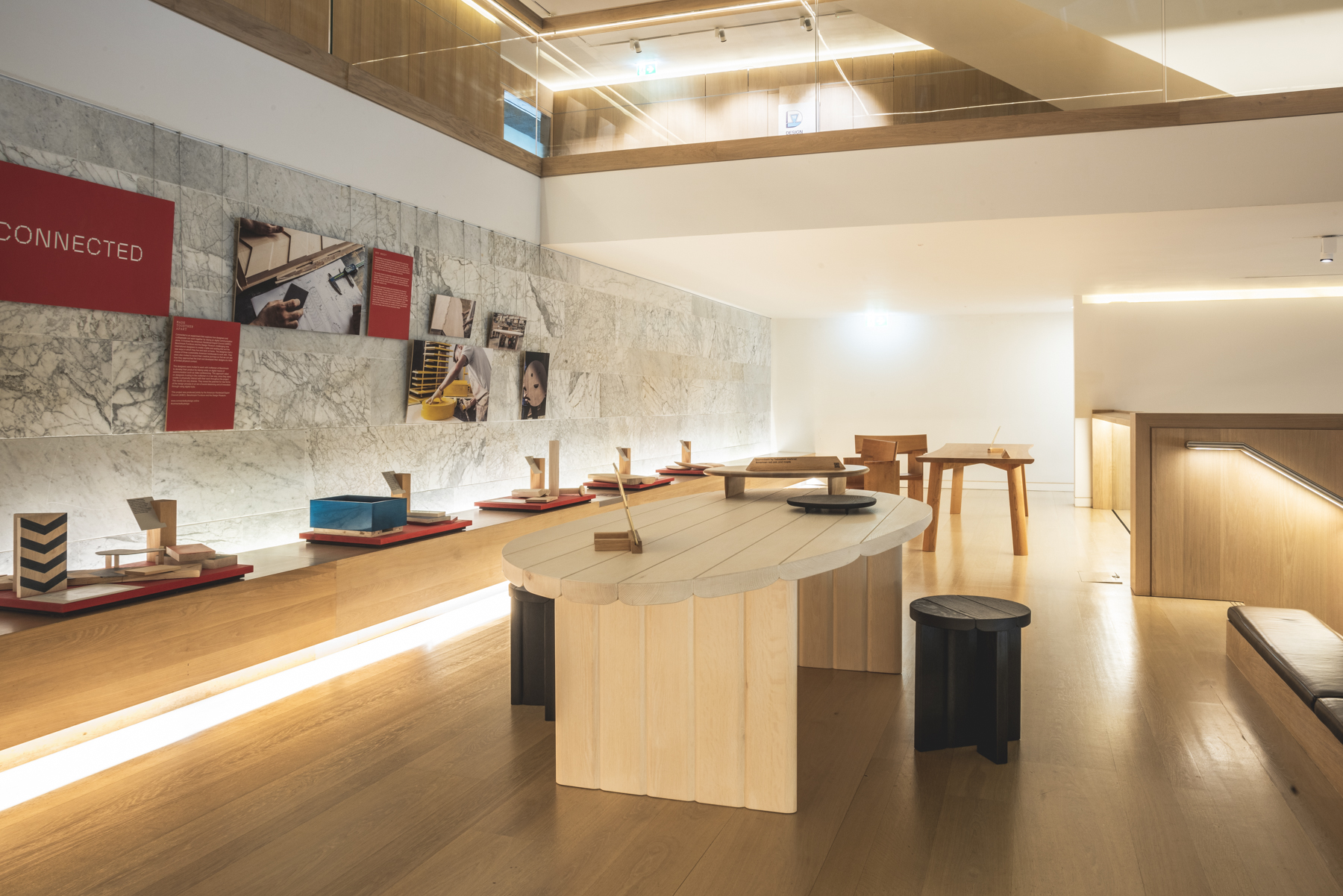
This extraordinary installation showcases the results of a unique experiment that sets out to push the boundaries of what is possible with these timbers and to explore how designers and craftspeople adapted their working practices during lockdown.
The project demanded that both the designers and craftspeople at Benchmark work innovatively, by relying solely on digital communication and video conferencing, to bring the designers’ visions to life. This approach required a new level of trust in the makers, since the designers had no physical contact with their pieces whilst they were being made at Benchmark’s Berkshire workshop during the summer.
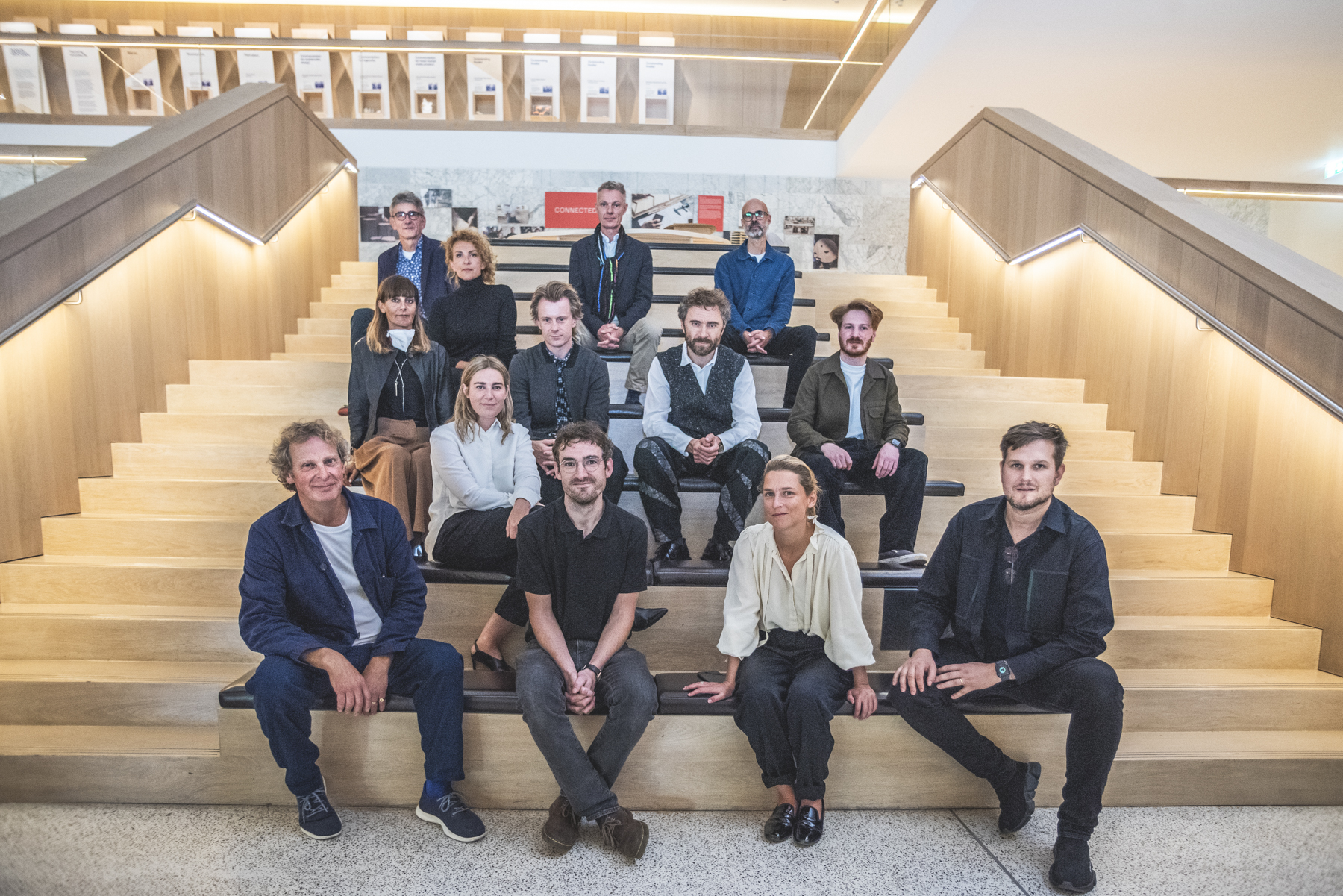
The designers involved in Connected are: Ini Archibong (Switzerland), Maria Bruun (Denmark), Jaime Hayon (Spain), Heatherwick Studio (UK), Sebastian Herkner (Germany), Maria JeglinskaAdamczewska (Poland), Sabine Marcelis (Netherlands), Studiopepe (Italy) and Studio Swine (UK / Japan).
The resulting responses to the brief are incredibly diverse and personal, with a bold array of natural and stained finishes that bring these sustainable timbers to life in a new way. Each of the designs have challenged the makers with their complexity and attention to detail.
THE KADAMBA GATE
INI ARCHIBONG (SWITZERLAND)
American cherry, red oak and thermally modified red oak
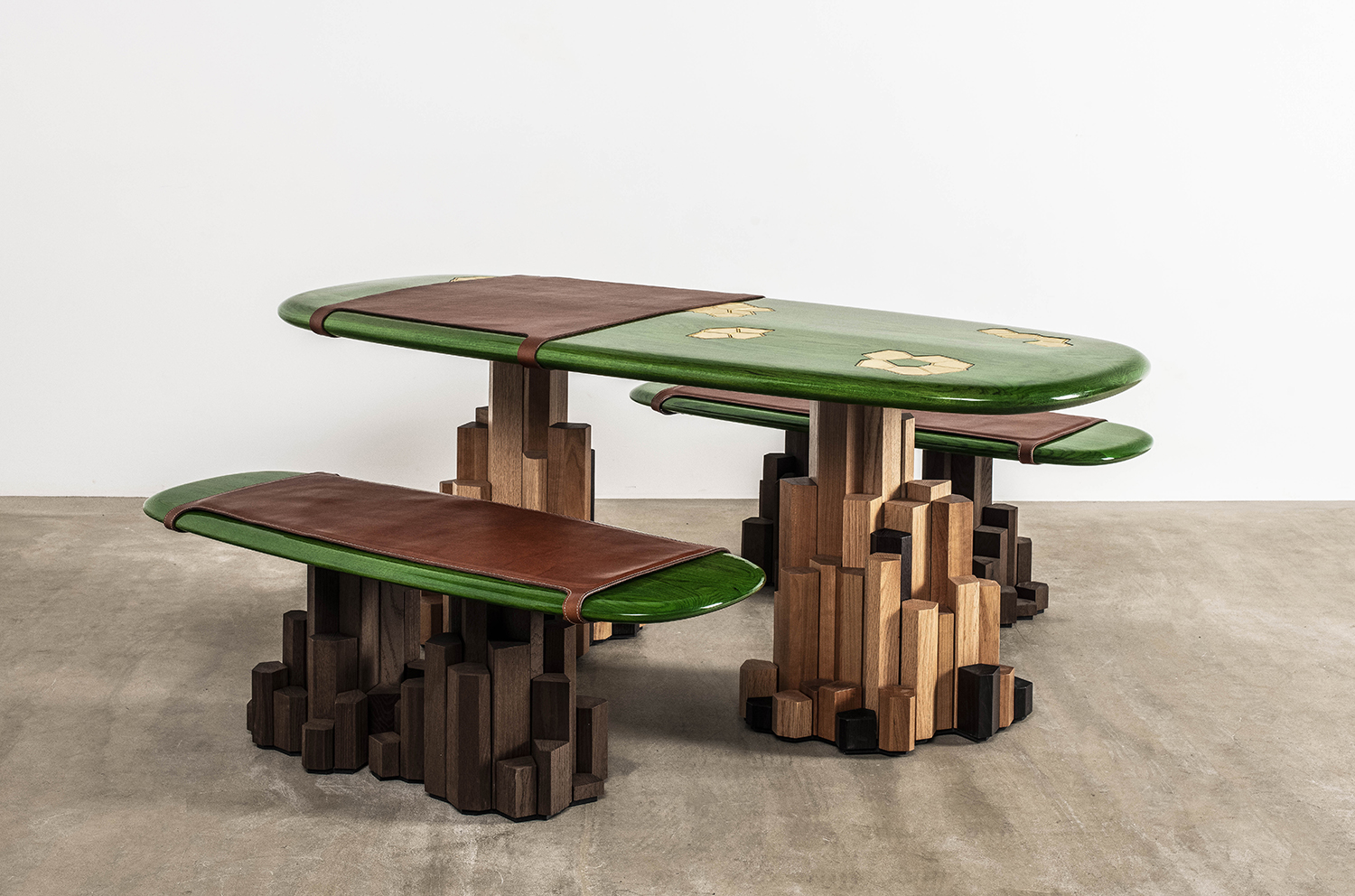

Portrait: Julian Anderson
Ini’s Kadamba Gate is driven by a strong narrative that guides the material choice as well as the piece’s construction. Both the table and bench function as outdoor pieces. The table has a metal base plate and frame that supports the tabletop. The sculptural underframe is made from irregular-shaped extrusions in multiple heights, inspired by the Giant’s Causeway in Northern Ireland. This underframe is constructed from a mix of materials – American red oak, American cherry and thermally modified American red oak. The table’s top is laminated and machined, with a colourful gloss epoxy finish, and intricate removable brass detailing, which doubles as drainage for its outdoor environment.
Ini’s bench uses a similar construction as the table, with a metal frame cased within sculptural timber extrusions. The top has a subtle camber for drainage, and a removable vegetable-tanned leather seat pad with stitched perimeter, made by leather specialists Bill Amberg Studio.
![]()
NORDIC PIONEER
MARIA BRUUN (DENMARK)
American maple

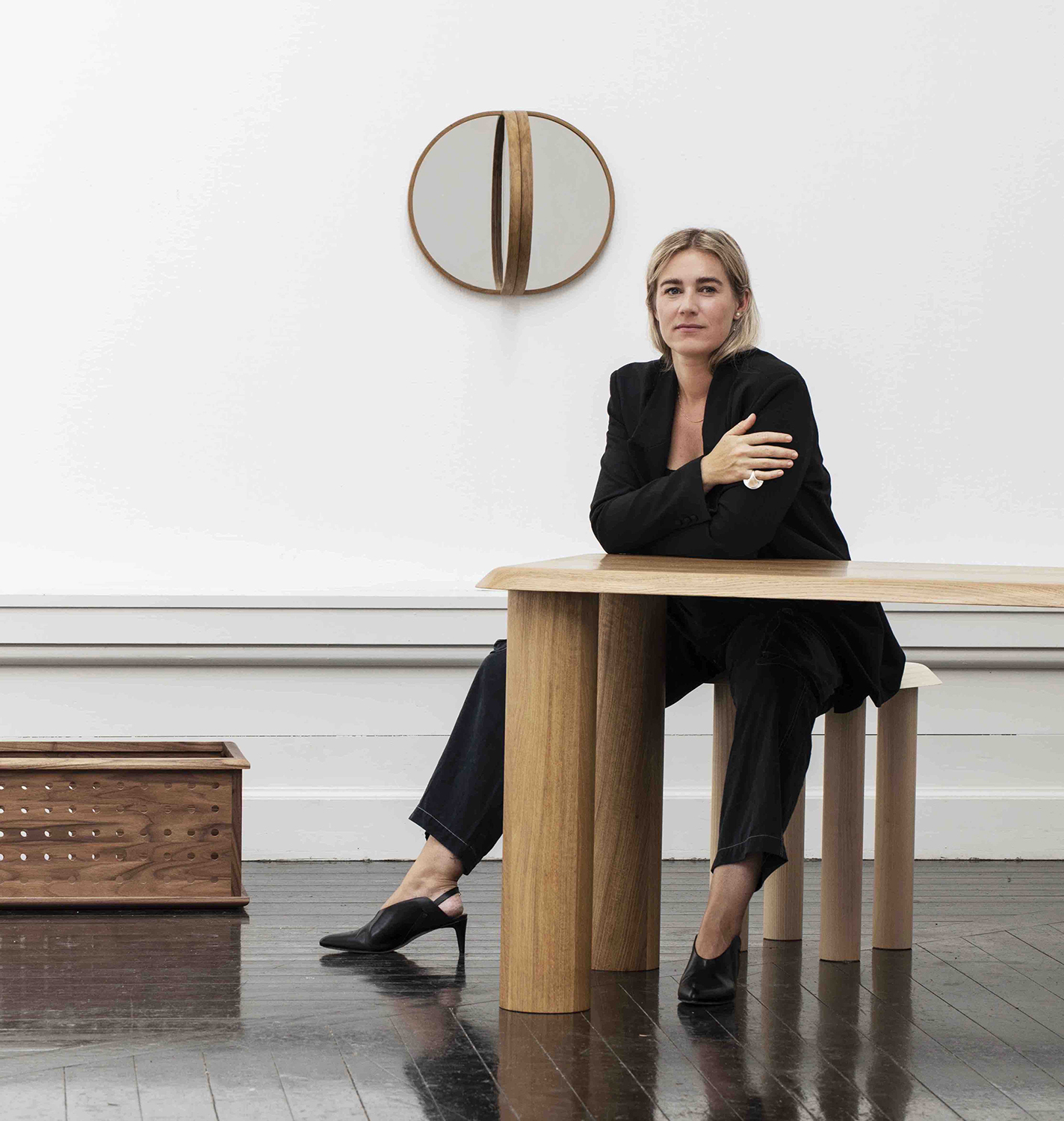
Portrait: Benita Marcussen
Maria’s collection, Nordic Pioneer, offers a masterclass in Nordic design. With a purity to both the seating and to her gate-leg table, they are intentionally pared back, to let the materials and construction do the talking.
Made entirely in American maple, a key design detail is the elegant wooden hinge that runs the length of the tabletop, to lift and drop the leaf. Components for this hinge are turned and drilled to within a fraction of a millimetre, to ensure a smoothness of movement. Turned rounded feet intersect with the square profile of the table leg, and subtle tracks for the gate legs are integrated on the underside of the leaf.
![]()
MESAMACHINE
JAIME HAYON (SPAIN)
American cherry
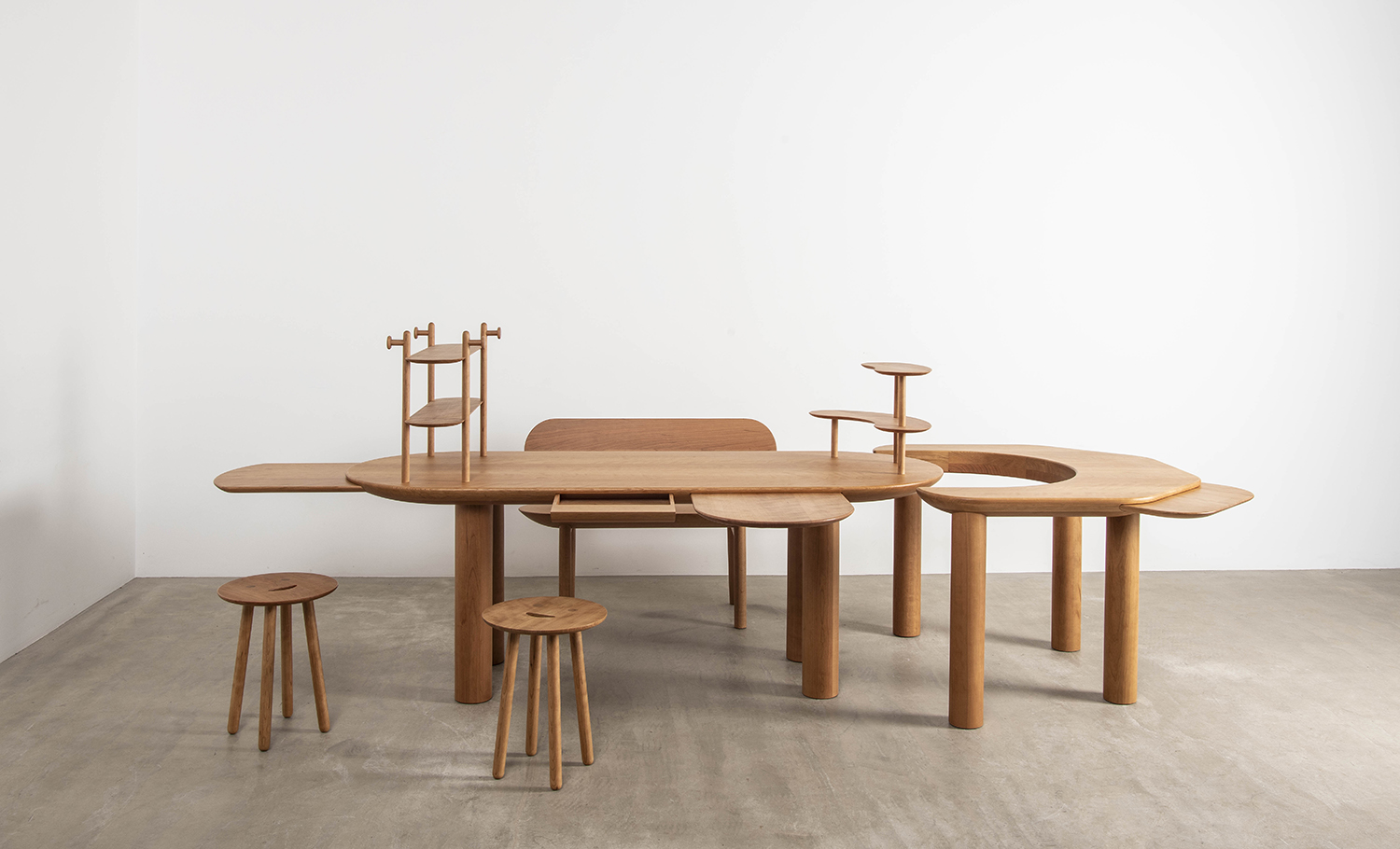

Portrait: James Mollison
The Mesamachine is a complex and ambitious multi-element build, providing a single space to work, play, eat and spend time with his family. Like a swiss army knife, functional elements can be opened and extended to serve a multitude of functions.
The main table frame is made up like a hollow torsion box, with tensioning ribs running along its length. The various storage solutions and extending shelves work on timber runners and involve an exacting degree of precision in their manufacture. Two stools and a bench follow a similar design language, with smiley faces cut out to add a playful element. Timber choice is American cherry with a clear oil.
![]()
STEM
HEATHERWICK STUDIO (UK)
American maple
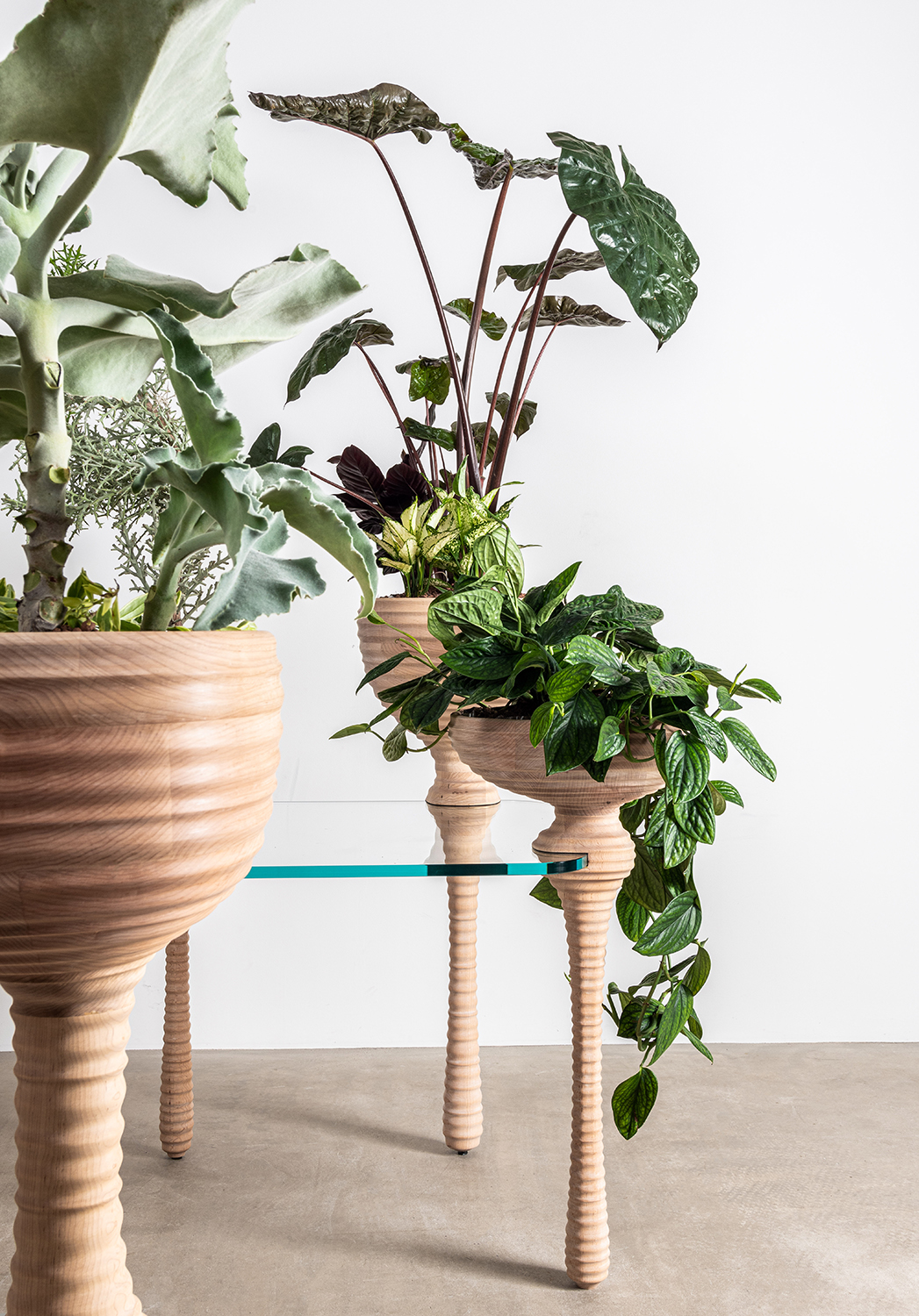

Portrait: Elena Heatherwick
Heatherwick Studio’s Stem celebrates the power of biophilia by incorporating planting into curved CNC-machined American maple legs, clamped to a glass tabletop. After spending 3 months at the same desk using video conferencing to communicate, the studio craved nature and began to see the space around them as a mini television studio – what is behind you and around you is now being seen by the world.
Initial inspiration evolved from the craft of wooden spoon carving. The same principle is applied to a shelving unit, with carved timber uprights and glass shelves. The seat will be upholstered in Gotland shearling, with a carved base that references the other elements.
![]()
STAMMTISCH
SEBASTIAN HERKNER (GERMANY)
American red oak and maple

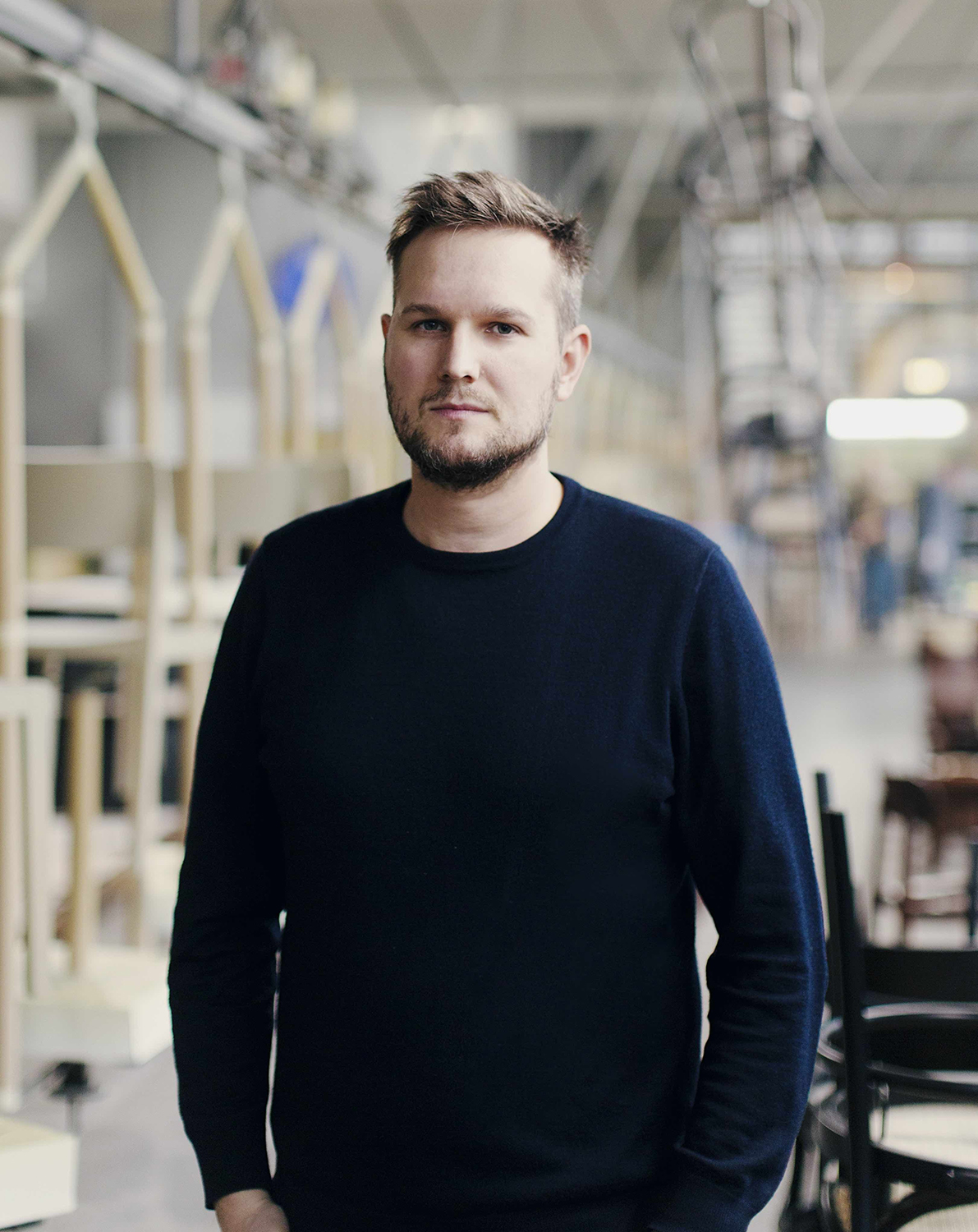
Portrait: Evelyn Dragan
With an organic and modular form, Sebastian wanted to create a landscape where the various elements of his day meet. The name Stammtisch translates as the ‘regulars table’ – a space for friends and family to gather every week. Using a thoughtfully selected choice of materials, the table is made from red oak, bleached, with a white matt natural oil finish. The large tray is made from American maple, ammonia fumed with a clear matt natural oil finish. His stools and small tray are made from scorched red oak.
The timber for the tabletop and other components is spindle-moulded to achieve the characteristic shape that is key to Sebastian’s design. Components were carefully jointed and glued up, with the design playing with contrasting grain directions from the tabletop and the movable trays, which can run along the length of the top within skived tracks.
![]()
ARCO
MARIA JEGLINSKA-ADAMCZEWSKA (POLAND)
American cherry
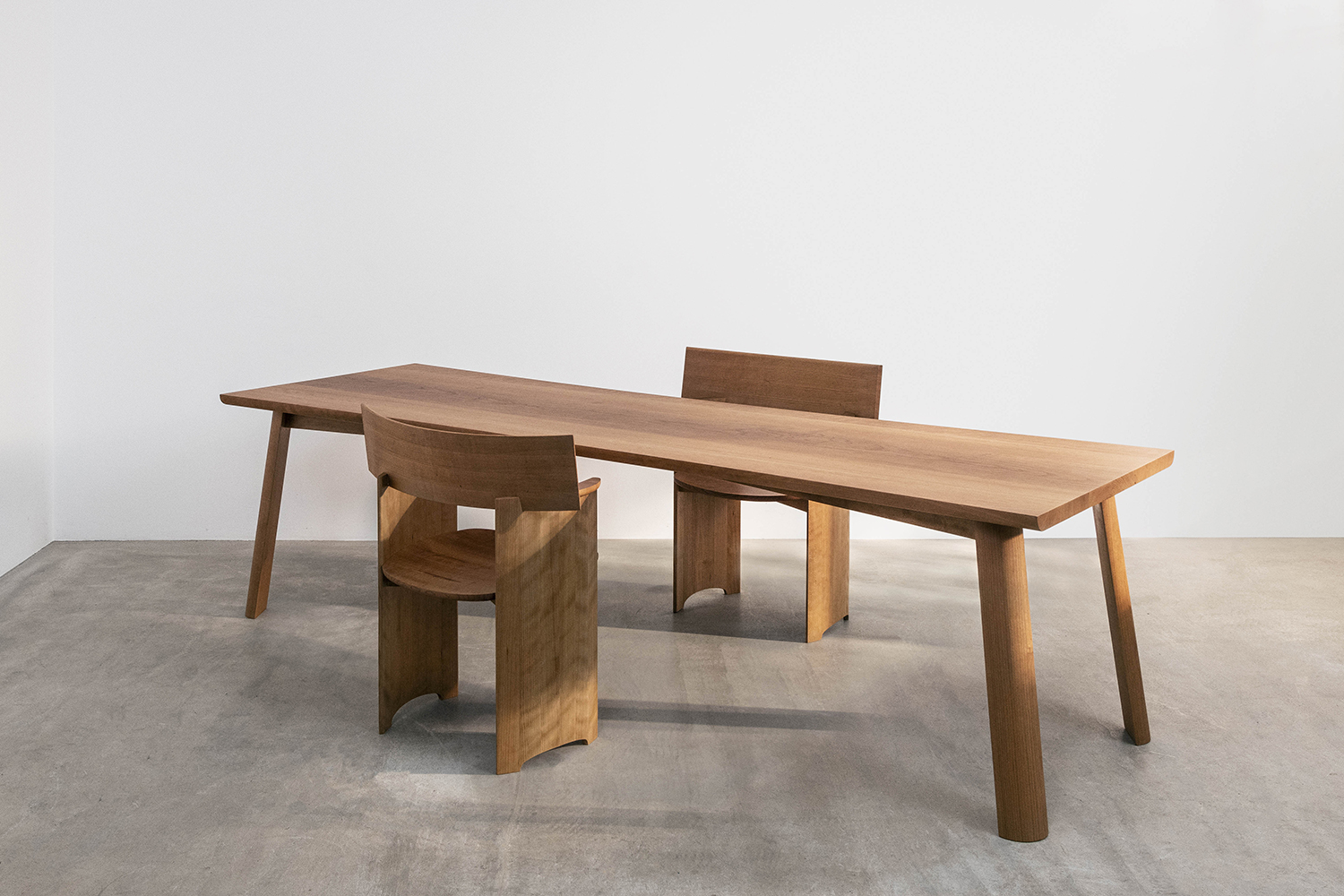
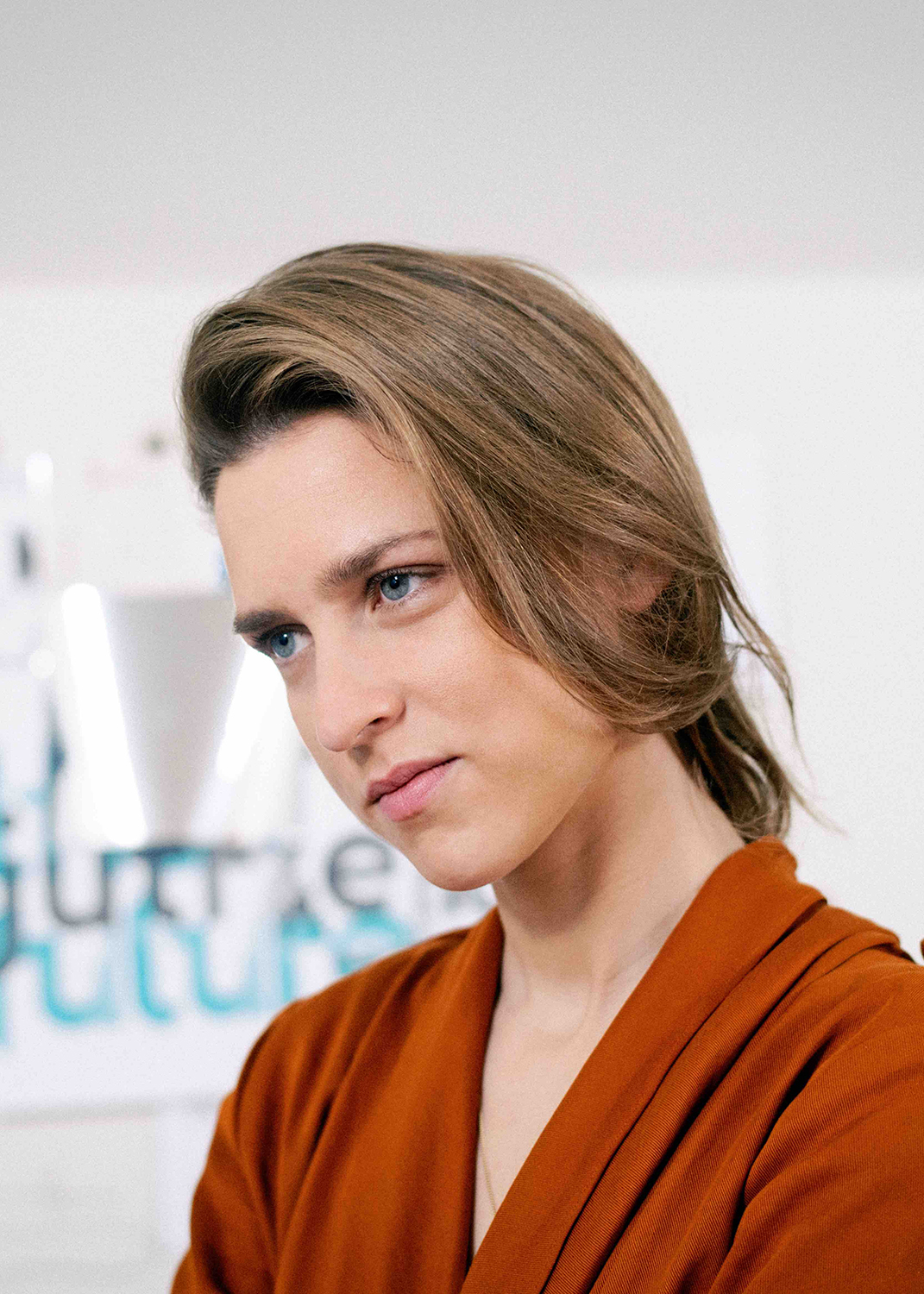
Portrait: Kasia Bobula
Maria’s Arco seat and table draw inspiration from sculptural forms and the architecture of Benedictine abbeys. With a focus on a prominent curve, the table uses prime American cherry with planks carefully grain matched and machined. The table’s angled legs are an unusual quarter-moon shape and create tension through the top by use of inset metal plates.
The chair has been designed to be sculptural, and to mimic the curves of the body. While appearing structurally simple, the construction choices (such as frame matching) showcase the degree of manufacturing proficiency. The side panels of the chair are coopered – a technique drawn from barrel-making, and the piece will act to
celebrate the beauty of the hardwood.
![]()
CANDY CUBICLE
SABINE MARCELIS (NETHERLANDS)
American maple

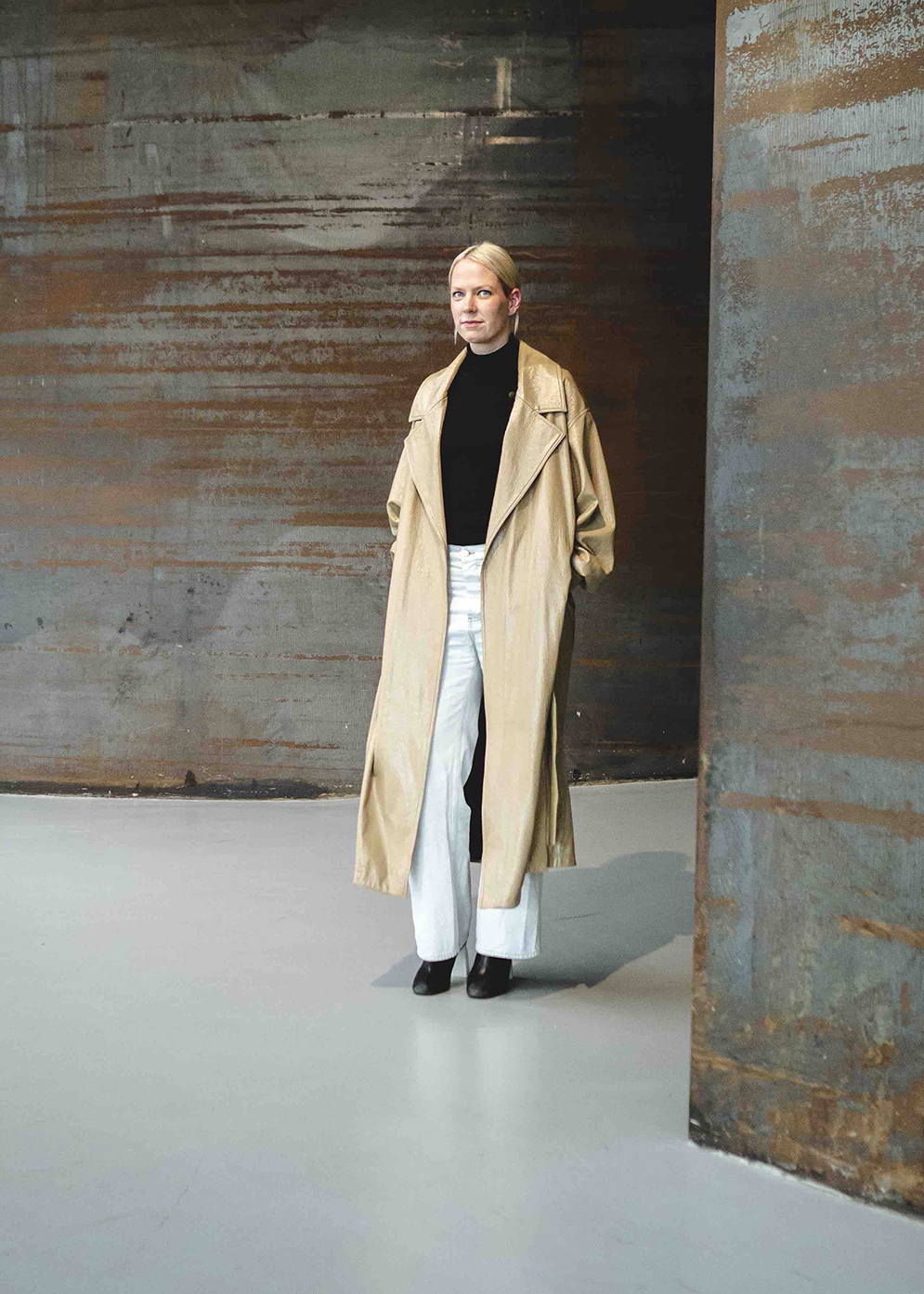
Courtesy of Museum Boijmans Van Beuningen
Sabine Marcelis’ Candy Cubicle transforms from ‘working mode’ into ‘hiding mode’ with an element of surprise on the inside – inspired by the suitcase scene in Pulp Fiction. The outer surfaces use veneered American maple with a white oil finish.
The interior has compartments for books and a computer, constructed from the same maple veneer – but coated in a yellow high-gloss translucent lacquer – hand polished to a fine finish. This offers a bright pop of colour when the cubicle is open, with the fine maple grain visible through the lacquer. The unit is on matching yellow casters, allowing the piece to be easily closed when the working day is over. Sabine’s seat, a circular stool, is made from stacked and turned solid maple, with matching casters.
![]()
PINK MOON
STUDIOPEPE (ITALY)
American maple
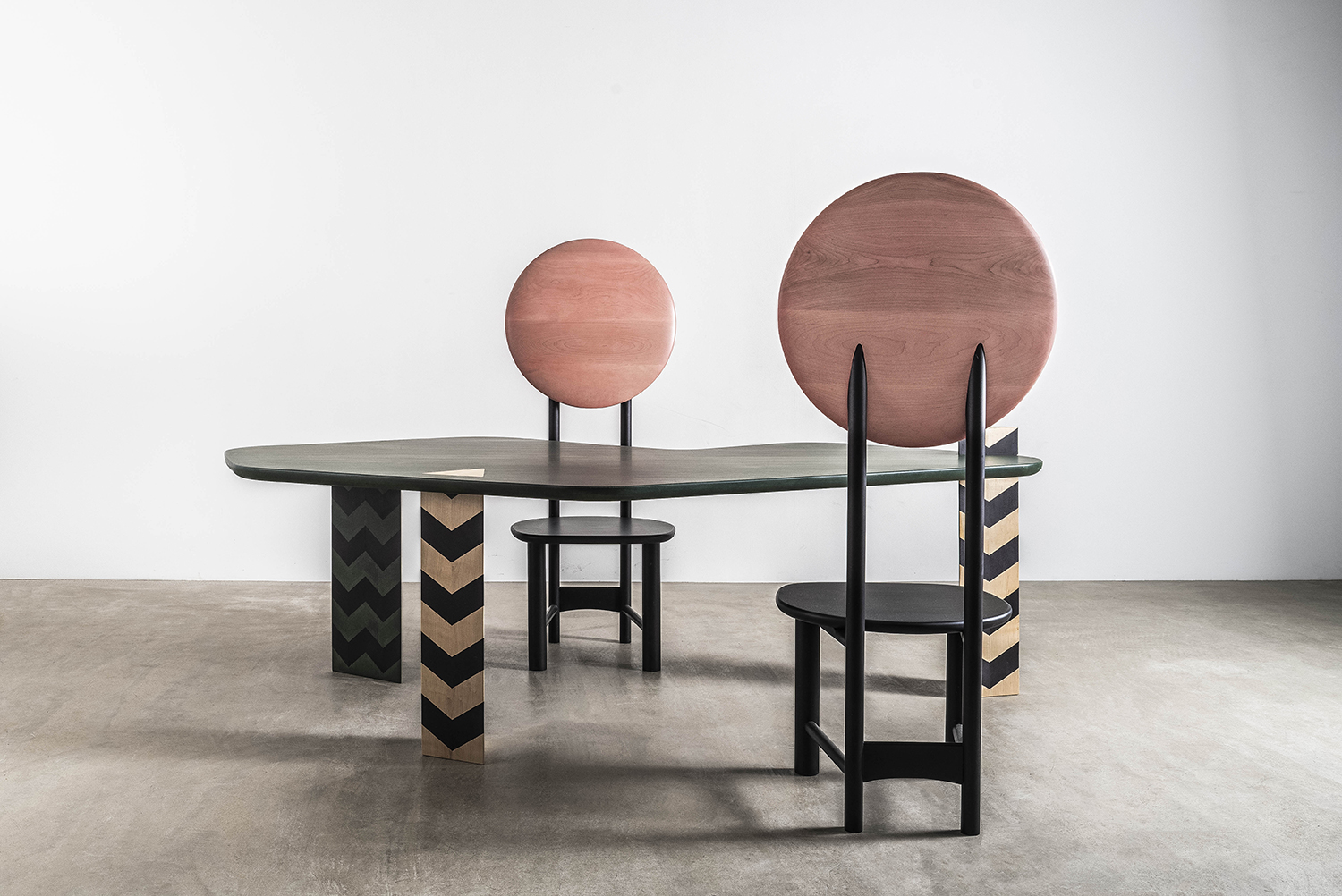

Photo: Andrea Ferrari
Studiopepe’s Pink Moon plays with the idea of cycles of renewal and new beginnings, inspired by the Pink moon in spring. Its construction involved contrasting inlay details on the table’s legs and a contemporary seat inspired by a Charles Rennie Mackintosh frame.
American maple was chosen for this piece. Timber was first selected and CNC cut for the leg inlays. These pieces were then stained and oiled, a process that dyed the timber through. The tabletop was planked and then cut on CNC to the desired nature-inspired form. Legs were mitred together, and then the contrast inlay fitted flush.
The chair’s unusual backrest comprises a large maple ‘moon’, CNC machined in two halves, drilled to accept the back legs and then stained. When the two halves are brought together, a seamless joint will be created, with the Pink Moon suspended by the Mackintosh-inspired frame.
![]()
HUMBLE ADMINISTRATOR’S CHAIR AND TABLE
STUDIO SWINE (UK/JAPAN)
American red oak and cherry
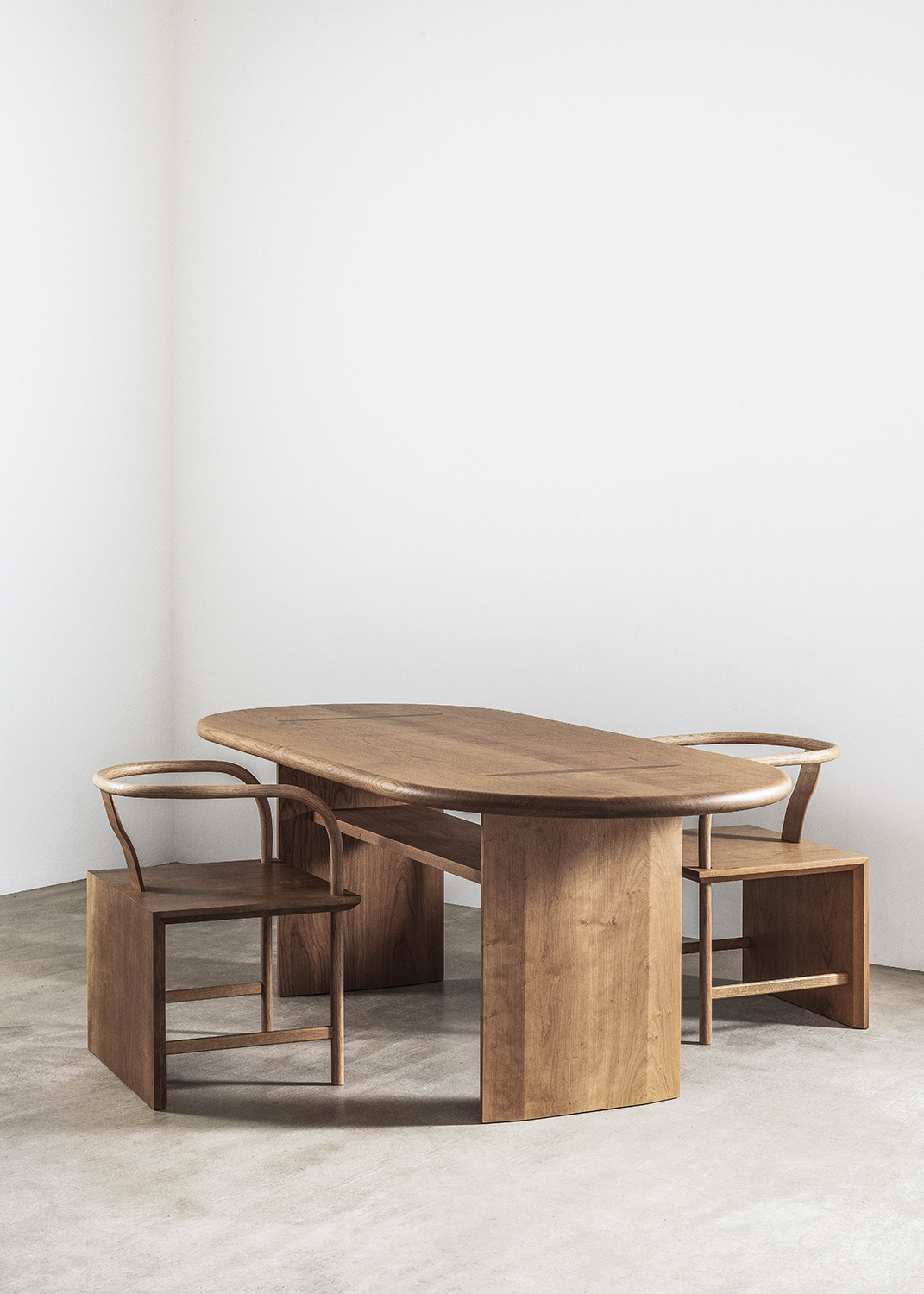

Portrait: Bruno Staub
Studio Swine designed a throne-style seat and table inspired by traditional Chinese gardens and the archetype of the Ming Chair. After spending lockdown in Tokyo, the pair were left craving nature and wanted to celebrate the timber in its purest form. American cherry was chosen for its warmth and caramel tones for the solid seat and back leg, with curved steam bent American red oak front legs, arms and backrest. The steam bend for the arms was ambitious and complex to fabricate, in that it bends across two axes – requiring a team of six craftspeople and a specially constructed jig to create its unusual form.
Their table uses a smooth clean piece of American cherry, with the straight leg profile visible through the top as end grain. An inset laptop shelf will act as a tensioning brace for the table.
![]()
Connected was held at the Design Museum from 11th September to 11th October as part of London Design Festival 2020.
A virtual version of the installation is available on https://www.connectedbydesign.online/

